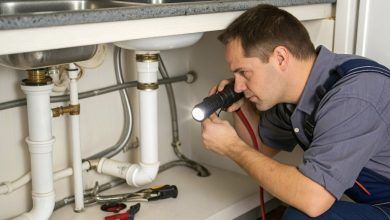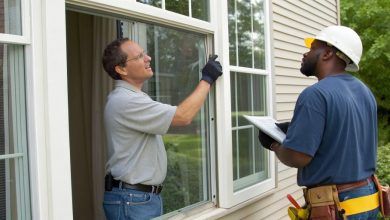
Chicago Starter Lawn Care: Maintenance & Tools
Starting a lawn in Chicago isn’t just about planting grass. It’s about understanding your soil, weather patterns, and choosing the right tools. Chicago’s diverse climate—featuring humid summers, snowy winters, and fluctuating spring and fall temperatures—presents unique challenges to homeowners. A smart lawn care plan tailored for this region can save you time, money, and frustration.
Many new homeowners make the mistake of applying a “one-size-fits-all” approach. That leads to patchy growth, excessive weeds, and soil degradation. Instead, consider a regionally-adapted strategy for Chicago Starter Lawn Care: Maintenance & Tools that works with—not against—nature.
Understanding Chicago’s Lawn Environment
Chicago falls within USDA Hardiness Zone 5b. This zone means that lawns here endure extreme temperature swings, with lows reaching -15°F in winter and highs often exceeding 90°F in summer. These conditions demand cool-season grasses like Kentucky Bluegrass, Fine Fescue, and Perennial Ryegrass. These varieties thrive in spring and fall and tolerate mild shade and foot traffic, which are common in suburban neighborhoods.
Soil Testing: The Non-Negotiable First Step
Before spending a dime on seeds or fertilizers, test your soil. According to the University of Illinois Extension, over 70% of lawn issues stem from poor soil pH or nutrient imbalance. A basic soil test costs around $20 and reveals pH, organic matter, and macronutrient levels like nitrogen, phosphorus, and potassium.
Chicago soils often lean clay-heavy, making them compact and slow-draining. This means aeration and compost amendment might be necessary before planting. Without this insight, beginners often overwater or over-fertilize—causing more harm than good.
Essential Lawn Tools for Beginners
Every starter lawn care plan needs basic tools. These don’t have to break the bank, but they must be reliable:
- Rotary Spreader: Evenly applies seed and fertilizer.
- Soil Rake: Levels soil and removes debris before seeding.
- Core Aerator: Vital for loosening Chicago’s compacted soil.
- Mower with Sharp Blades: Cutting grass with dull blades invites disease.
- Garden Hose with Adjustable Nozzle: Ensures even, deep watering.
Investing in quality tools upfront saves hundreds over time. Renting aerators once a year is a smart, cost-effective move for beginners.
Seeding the Right Way
Early fall is ideal for starting a lawn in Chicago. Temperatures cool, rain is more consistent, and weed competition lessens. Choose a seed blend made for the Midwest. Ensure the label includes varieties tested under the National Turfgrass Evaluation Program (NTEP). This ensures performance under real-world conditions.
Spread seed with a rotary spreader, cover with a light layer of compost, and water consistently. Avoid overwatering, which drowns new seedlings. Light, daily watering for 2–3 weeks is optimal until germination takes hold.
Fertilizing & Weed Control
New lawns need nutrients, but not too much. Over-fertilizing can burn young grass. Use a starter fertilizer with a high phosphorus content (like 10-20-10) to promote root development. The Illinois Department of Agriculture recommends applying no more than 1 lb of nitrogen per 1,000 square feet.
For weed control, skip pre-emergent herbicides when seeding. They stop grass seed from growing, too. Wait 6–8 weeks before applying any post-emergent treatments.
Seasonal Lawn Maintenance in Chicago
Lawn care isn’t a one-time effort—it’s a year-round commitment. Here’s a simple seasonal guide:
- Spring: Rake, aerate, overseed thin spots, and apply crabgrass preventer.
- Summer: Mow high (3 inches or more), water deeply once or twice a week, and monitor for fungus.
- Fall: Core aerate, fertilize, and overseed if needed. This is prime growth season.
- Winter: Avoid salt damage near walkways. Shovel carefully to avoid tearing dormant grass.
Regular mowing, watering, and feeding builds resilience. Neglect in one season often leads to extra work the next.

Organic vs. Synthetic Lawn Care Approaches
Chicago homeowners often face a philosophical choice: go organic or use traditional synthetic fertilizers. Both have pros and cons. Organic methods—like compost tea and natural pest deterrents—build soil health over time. However, they work slower and require more hands-on attention.
Synthetic fertilizers offer quick, visible results. But overuse may harm beneficial microbes and pollute runoff into Lake Michigan. A hybrid approach—starting with organic soil building, then using synthetics sparingly—works well for most beginners.
According to a 2023 report by the National Association of Landscape Professionals, 54% of homeowners now prefer organic or low-impact methods, citing health and environmental concerns.
Common Mistakes and How to Avoid Them
New lawn owners in Chicago often:
- Water too frequently, encouraging shallow roots.
- Mow too short, stressing grass.
- Fertilize in mid-summer, causing chemical burns.
- Skip fall prep, resulting in poor spring growth.
Avoiding these mistakes leads to a healthier, more sustainable lawn year after year.
FAQs on Chicago Starter Lawn Care: Maintenance & Tools
- What is the best grass type for Chicago lawns?
Kentucky Bluegrass and Fine Fescue are ideal for their resilience in cold and moderate drought conditions. - When should I seed my Chicago lawn?
Late August to mid-September is ideal due to moderate temps and consistent rainfall. - How often should I mow my new lawn?
Once it reaches 3–4 inches. Never cut more than one-third of the blade height at a time. - Should I aerate in spring or fall?
Fall is preferred in Chicago. It allows roots to expand before winter dormancy. - Can I use compost as a lawn fertilizer?
Yes. Compost improves soil texture and adds nutrients slowly over time. - How do I get rid of weeds in a new lawn?
Wait 6–8 weeks after seeding before applying any herbicides. Spot treat rather than spraying the entire lawn. - Is it necessary to mulch grass clippings?
Yes. Clippings return nitrogen to the soil and reduce the need for extra fertilizer.
Final Thought
Creating a lush, green yard in Chicago isn’t about quick fixes. It’s about smart planning, regular care, and using the right tools. Whether you’re just moving in or renovating a tired yard, understanding Chicago Starter Lawn Care: Maintenance & Tools can give you a healthy lawn that lasts for years. By combining science-backed techniques with the right seasonal habits, even beginners can master the art of lawn care in the Windy City.
Read More:
Choosing a Sculpture that Suits Your Garden



